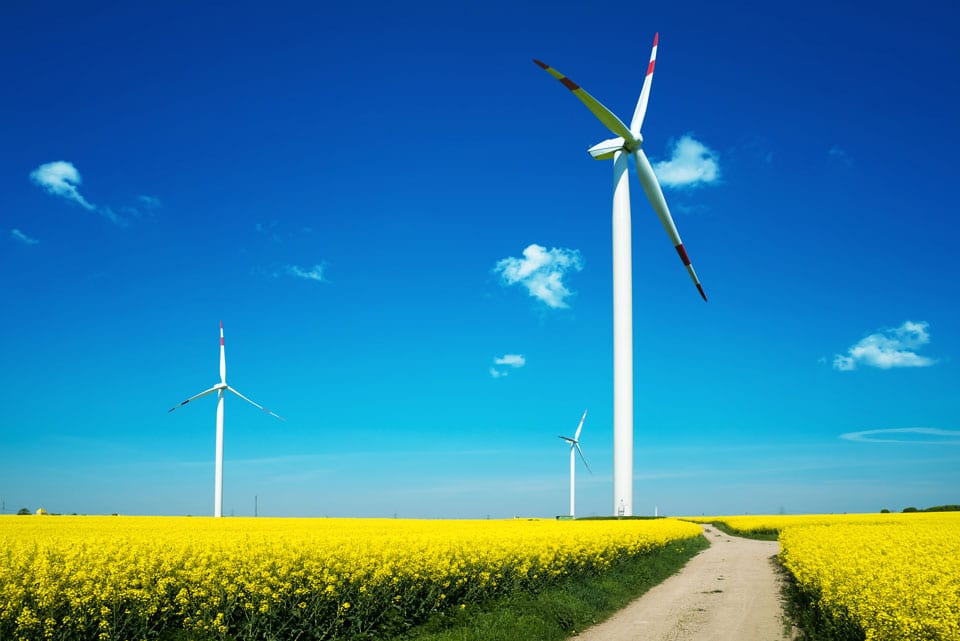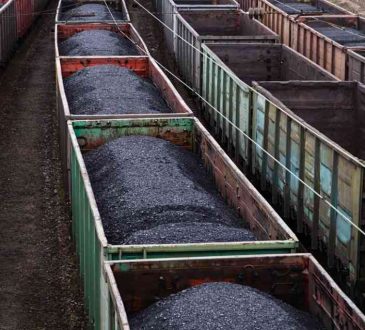Ranked: Most Environmentally Friendly Countries in the World, 2023

In reaction to the pressing danger of climate change, countries that are keen on preserving the environment have put significant amounts of money into renewable energies, such as the Global Biofuel Alliance (GBA) and International Solar Alliance (ISA), to reduce its impact and reach their environmental conservation goals.
The European Union’s Green Deal is a prime example of their commitment to reach climate neutrality by 2050. They’re also investing in green technologies, with Israel being a chief example. Israel’s work in water research has been particularly successful and has earned them a reputation as a world leader in water technology.
The switch to renewable energy has sparked a wave of creativity, saved money on energy costs, and given rise to approximately 12.7 million careers worldwide. Even in times of hardship, this sector has created jobs. Even the transportation sector, a significant source of emissions, has seen the introduction of high-speed rail systems in Japan and expanded bike paths in the Netherlands.
Electric vehicles have grown in popularity, particularly in countries such as New Zealand and Norway, which are looking to move away from cars with internal combustion engines. To encourage the adoption of EVs, governments often provide incentives such as subsidies, tax breaks, reduced road tolls, free parking, and allowing access to bus lanes. These advances are essential to help preserve the environment and reduce our dependence on limited fossil fuels.
We looked at indices such as EPI, ETI, and the Renewable Energy section of CCPI to determine which countries are most devoted to environmental protection. These indices demonstrate which nations are making significant progress in preserving the environment.
Based on this methodology, here are the top environmentally conscious countries:
- Denmark:
Denmark’s leadership in green energy is symbolized by its iconic wind turbines. As far back as 2019, wind energy contributed to a noteworthy 50 percent of Denmark’s electricity consumption, which has since risen to approximately 60 percent. Denmark’s resolute dedication to mitigating greenhouse gas emissions is evident through its adoption of eco-friendly agricultural practices, with a goal of achieving a substantial 70 percent reduction by 2030. - Sweden:
Sweden’s ambition is to achieve 100 percent renewable energy reliance by 2040, benefiting from an already highly decarbonized power infrastructure. Presently, renewables, primarily wind and hydropower, contribute to nearly 60% of Sweden’s energy production, aligning with the attainable goal. The Vision Zero initiative, which focuses on reducing road fatalities, underscores the country’s commitment to transitioning to safer and more environmentally friendly transportation modes. - Finland:
Finland’s objective is to attain carbon neutrality by 2035, and to attain this target, the country has made substantial investments in wind and solar energy. The extensive forests, which encompass more than 73% of Finland’s land area, are subject to sustainable management practices, ensuring ecological advantages. Finland employs comprehensive water management approaches, including the preservation of groundwater and safeguarding numerous lakes, as a demonstration of its dedication to climate-smart practices. - Norway:
Norway boasts one of the world’s top energy generation systems, primarily driven by hydropower.
Around 98% of Norway’s electricity supply is sourced from renewable energy, as reported by the International Energy Agency.
Norway’s dedication to electric vehicles is well-known, with a target to make all new passenger cars and vans emission-free by 2025.
The effects of this initiative were noticeable post-2016, as highlighted by the OECD. - Austria:
Austria’s energy supply leans heavily on renewable sources, with an impressive 77% of its energy derived from renewables, primarily hydropower.
The “ÖkoKauf Wien” initiative underscores green public procurement and encourages the use of sustainable products and services in public institutions.
Austria’s rigorous water management practices guarantee that more than 95% of its population enjoys access to top-quality spring water. - Switzerland:
Switzerland has set a robust commitment to reduce greenhouse gas emissions by 50% by 2030, using 1990 as a reference point.
The nation’s awareness of environmental shifts is exemplified by the noticeable retreat of its glaciers.
Switzerland’s energy mix heavily relies on hydroelectric power, with over 60% of its electricity sourced from this renewable and sustainable energy source.
Since 2012, Switzerland has been actively implementing the Swiss Biodiversity Strategy, a comprehensive plan that outlines numerous conservation measures aimed at protecting the country’s diverse flora and fauna. - Netherlands:
The Netherlands grapples with the twin challenges of rising sea levels and land reclamation.
To tackle these issues sustainably, the country has implemented strategies like green public procurement and waste reduction.
The Netherlands has set an ambitious target to transition to a circular economy by 2050.
By the year 2020, over 17% of its energy was sourced from renewable options, with a strong focus on wind and solar investments.
Additionally, the Dutch “Room for the River” program prioritizes the health of river ecosystems, flood risk management, and the conservation of biodiversity. - Estonia:
Estonia is dedicated to reducing GHG emissions by 70% by 2030 and 80% by 2050.
Currently, renewable energy sources make up 27% of Estonia’s total electricity production, with wind power accounting for 15%.
The “Estonian Green Movement” emphasizes forest conservation and sustainable forestry practices.
Estonia’s vast forests cover approximately 57% of its land, playing a vital role in preserving unique habitats and acting as effective carbon sinks. - Luxembourg:
Luxembourg introduced its first climate law in 2020, committing to reduce carbon emissions by 55% by 2030.
The nation is actively working toward sourcing 25% of its energy from renewable resources by 2030, demonstrating its dedication to transitioning to cleaner energy sources.
Luxembourg has made significant investments in solar energy and sustainable public transport systems, including an extensive tram network.
The country’s “Biodiversity Strategy 2030” places a strong emphasis on the conservation of habitats and species, showcasing an integrated environmental vision. - United Kingdom:
The United Kingdom has been at the forefront of environmental policies, particularly since committing to achieving net-zero carbon emissions by 2050.
The UK has experienced significant growth in offshore wind energy, hosting some of the world’s largest wind farms off its coasts.
Over 48% of the UK’s electricity is derived from renewable sources, with wind, biomass, and solar playing pivotal roles in its clean energy transition.
The “Blue Belt” program is aimed at safeguarding marine environments across the UK Overseas Territories, reflecting the nation’s commitment to protecting biodiversity.
The UK’s pledge to eliminate avoidable plastics by 2042 is part of its comprehensive sustainability policy. - France:
France’s environmental strategy is marked by policy innovation and technological advancement, positioning it among countries with strong environmental policies.
The country is actively phasing out coal-fired power stations while increasing reliance on nuclear, wind, and solar energy sources.
France’s 2019 energy law targets a 37% reduction in carbon emissions by 2030 compared to 1990 levels, demonstrating its dedication to climate action.
Renewable energy constitutes approximately 25.3% of France’s total energy consumption and supports a substantial number of full-time jobs.
France’s holistic initiatives like the “Grenelle Environment” focus on maintaining water quality and sustainability across urban and rural areas. - Latvia:
Latvia’s lush forests cover approximately 54% of its land area, protected by stringent legislation to ensure their preservation.
The country primarily relies on biomass and hydropower, with renewables accounting for over 40% of its energy consumption in 2020, as reported by the International Energy Agency.
Latvia’s “Green Scheme” policy incentivizes sustainable agricultural practices, contributing to biodiversity conservation and clean water initiatives.
Since joining the European Union in 2004, Latvia has made significant strides in residential energy efficiency, carbon emissions reduction, and wastewater treatment, aligning with its commitment to environmental progress. - Germany:
Germany’s “Energiewende” or energy transition policy has positioned it as a pioneer in the global renewable energy movement.
By 2023, Germany sourced over 51.7% of its electricity from renewables, showcasing its significant progress in clean energy adoption.
The country actively promotes reforestation projects and habitat conservation to enhance its environmental sustainability.
As an industrial powerhouse, Germany places a strong focus on cleaner technologies and efficient waste management systems, further emphasizing its commitment to environmental sustainability. - New Zealand:
New Zealand’s environmental consciousness is deeply rooted in its Maori heritage, which emphasizes the sacred bond between the land and its people.
By 2019, an impressive 84% of New Zealand’s electricity generation came from renewable sources, with hydropower playing a central role.
The country’s “Predator Free 2050” initiative reflects its commitment to protecting native species from invasive predators.
New Zealand has also set ambitious climate goals under the Paris Agreement, aiming to reduce net carbon emissions by 50% below 2005 levels from 2021 to 2030. - Croatia:
Croatia has shown a strong commitment to transitioning towards a sustainable future by heavily investing in renewable energy sources.
As of 2020, approximately 28.02% of Croatia’s total energy consumption came from renewable sources, particularly hydro and solar power.
The country has ambitious plans to shut down landfills and prevent water pollution by 2024, replacing them with modern waste-treatment facilities.
According to the European Environment Agency, Croatia has committed to investing an average of $5.3 billion in renewable energy by 2030, underlining its dedication to clean energy.
These nations stand as exemplary models of environmental stewardship, demonstrating the potential for transformative change in addressing climate challenges. Their achievements in renewable energy adoption, greenhouse gas reduction, and conservation initiatives underscore the power of forward-thinking policies and determined action. From Denmark’s iconic wind turbines to Norway’s ambitious emission-free transport goals, these countries provide a compelling global example of effective environmental leadership. Their efforts inspire us to embrace a sustainable future through dedication and collective action, safeguarding a healthier planet for future generations.
Have you read?
Revealed: Top Environmental Innovative US States, 2023.
Report: Best Countries for Cyber Security Professionals, 2023 (Average Salary).
Best CEOs in The Global Video Streaming Industry, 2023.
Ranked: World’s Best-Selling Champagne Brands, 2023.
Ranked: Top Companies in Sports Tech, 2023.
Add CEOWORLD magazine to your Google News feed.
Follow CEOWORLD magazine headlines on: Google News, LinkedIn, Twitter, and Facebook.
Copyright 2024 The CEOWORLD magazine. All rights reserved. This material (and any extract from it) must not be copied, redistributed or placed on any website, without CEOWORLD magazine' prior written consent. For media queries, please contact: info@ceoworld.biz








